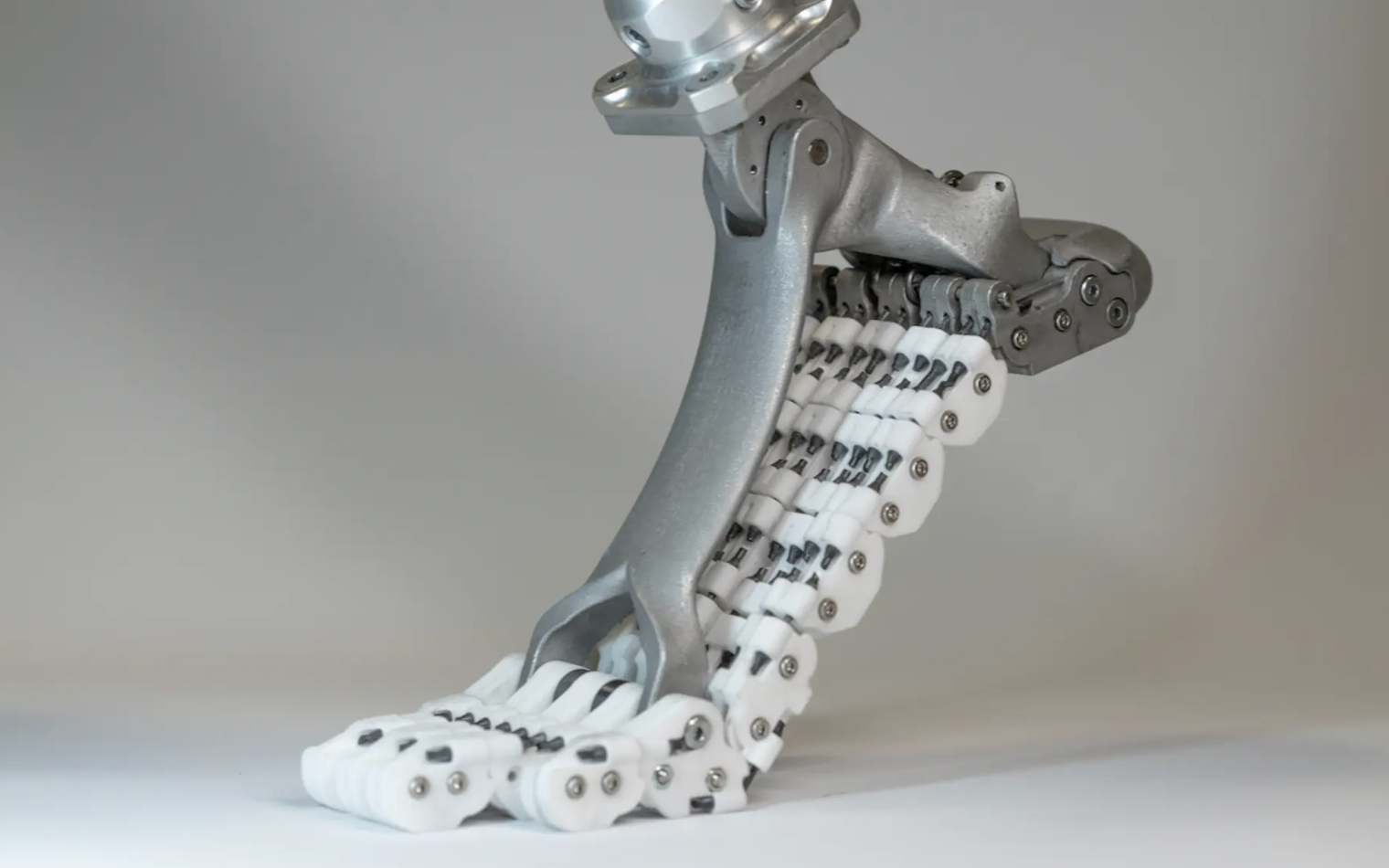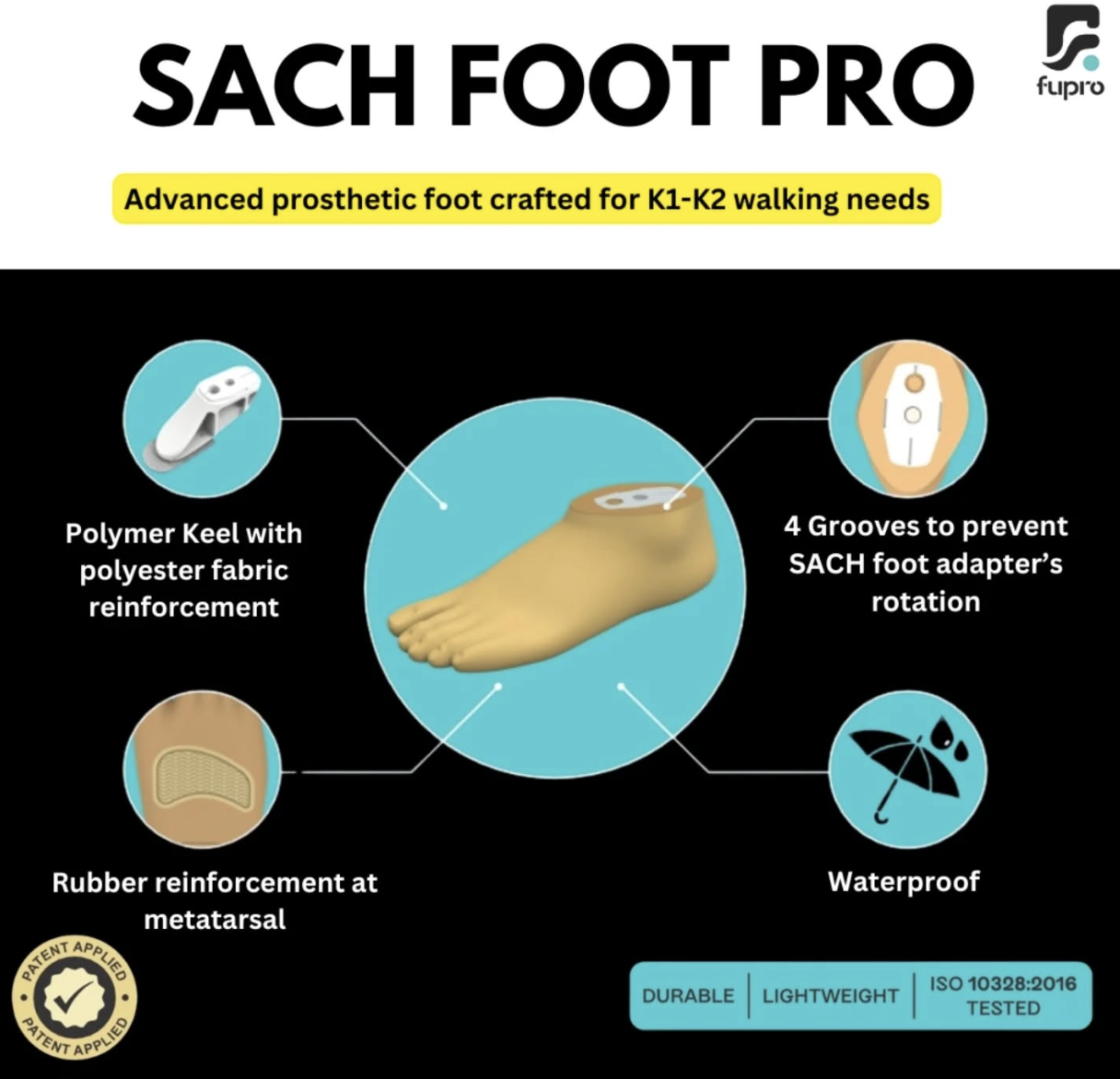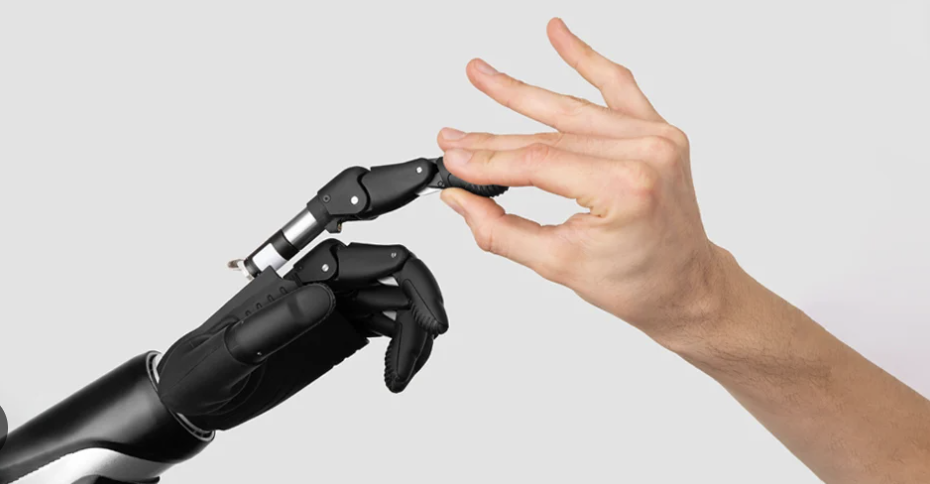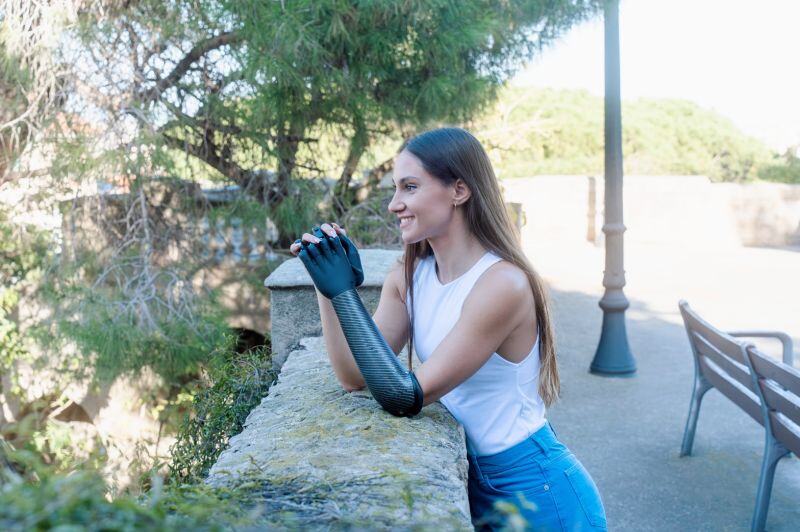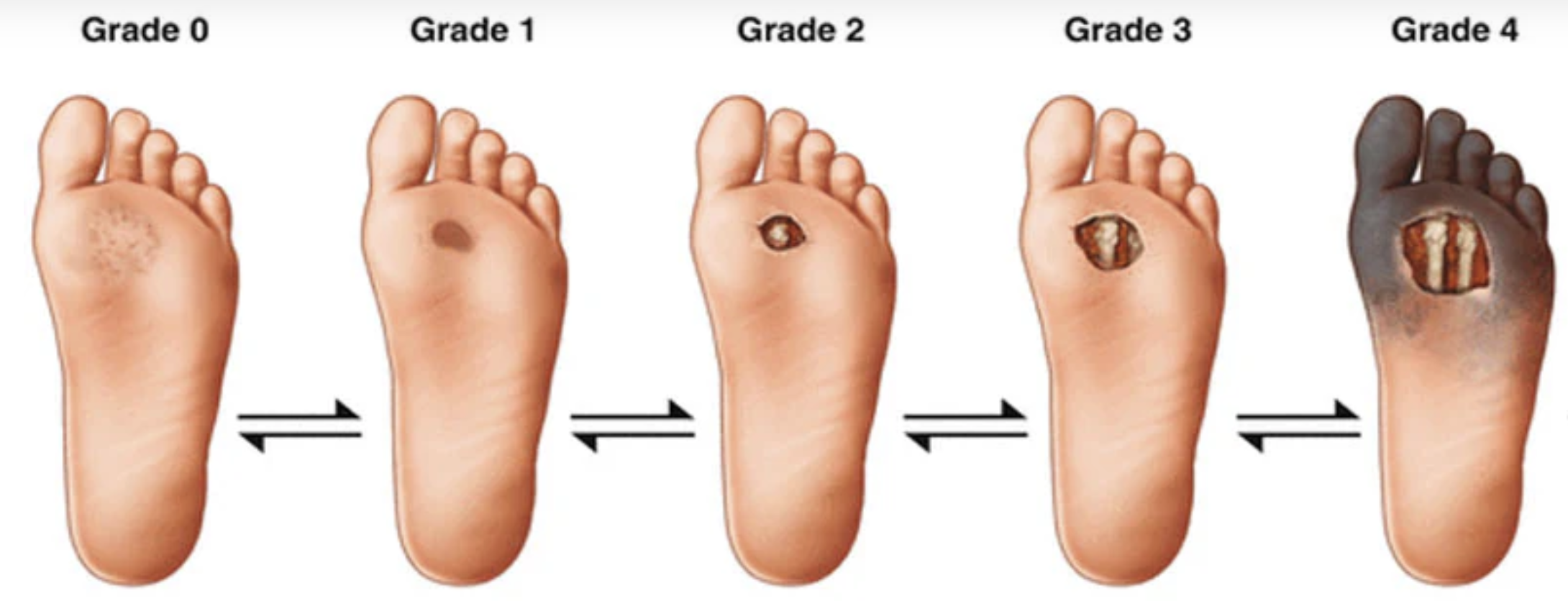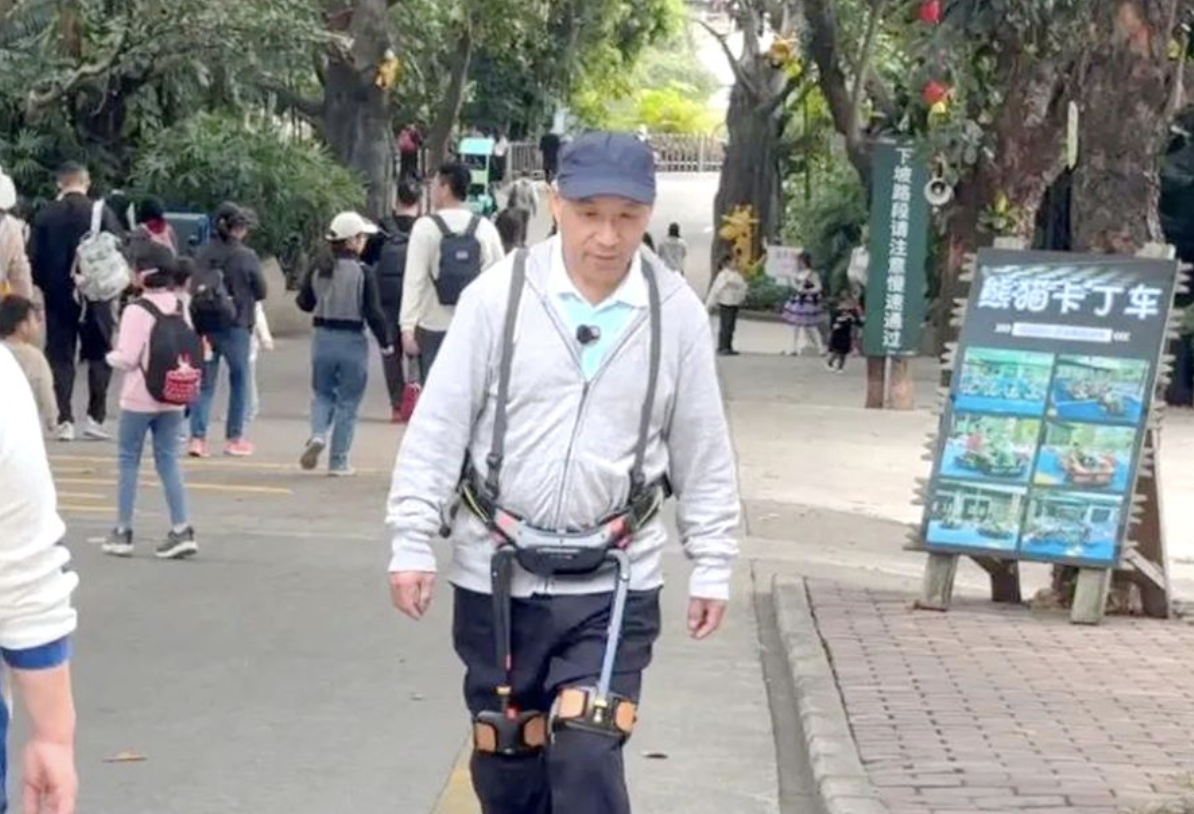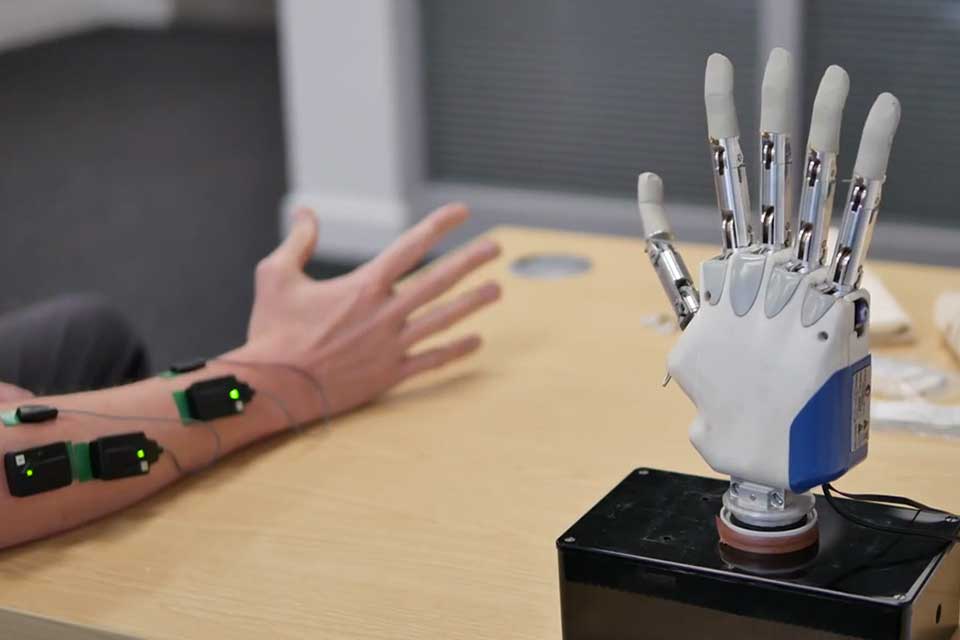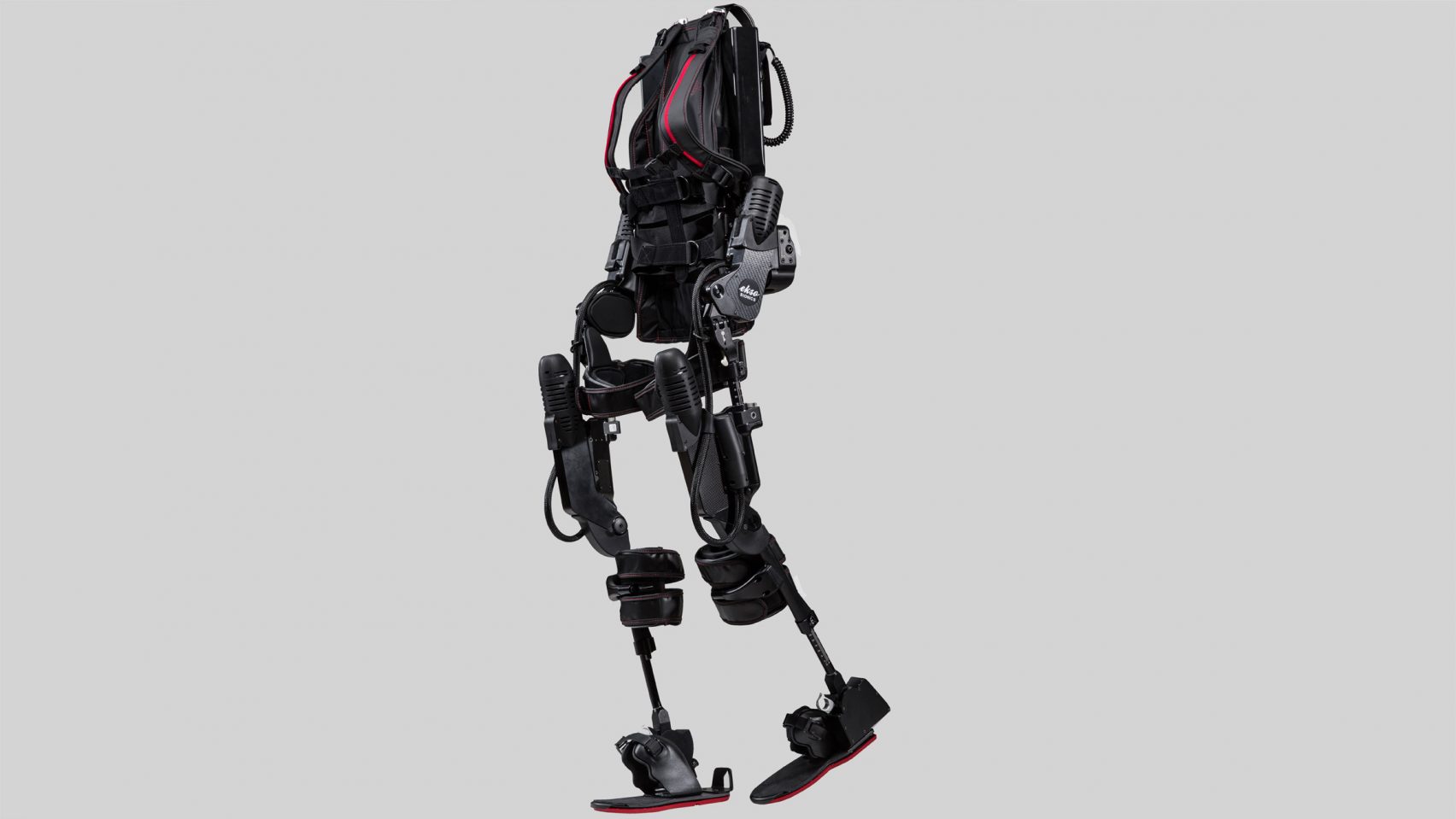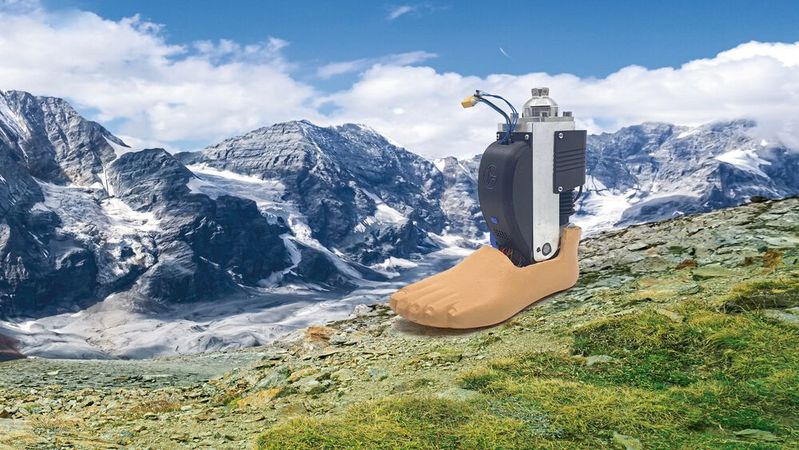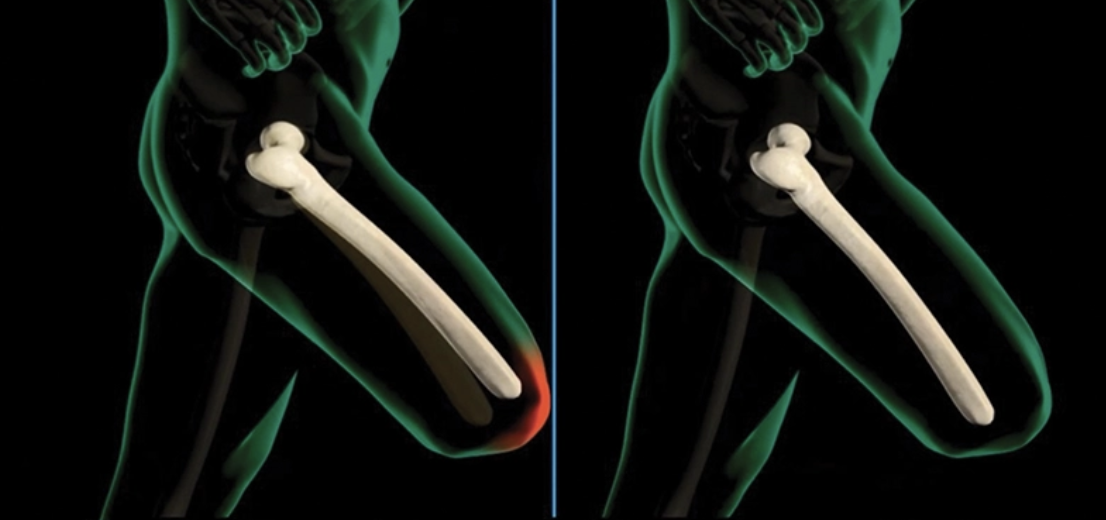The vast majority of prosthetic feet are either completely rigid or – at best – slightly compliant.
By contrast, the human foot flexes and stretches to a great degree, keeping us upright on uneven or sloped surfaces, and helping move our legs forward as we walk. The SoftFoot Pro is designed to bring those same functions to a prosthetic foot.
Created by Manuel G. Catalano and colleagues at the Istituto Italiano di Tecnologia (Italian Institute of Technology), the prototype device is completely unpowered, and tips the scales at just 450 g (1 lb). It can support wearer loads of up to 100 kg (220 lb).
As you can see in the photos, the SoftFoot Pro incorporates five parallel chains of linked high-strength plastic segments. The front segments of each chain replicate the phalanges (toe bones) while the segments behind them replicate the metatarsal bones (which run from the base of each toe back to the heel).
Elastic connectors are used to link the segments of each chain. Running the length of each chain is an internal steel cable that is anchored to the titanium heel.
Sitting above the five chains is a titanium arch mechanism. One end of it is connected to the base of the phalanges, while the other is connected to the heel. Both connection points allow the phalanges and heel to pivot relative to the arch. This setup serves the same function as the human foot's plantar fascia, which is a band of tissue that connects the heel bone to the base of the toes.
Like the plantar fascia does for the foot, the arch mechanism allows the SoftFoot Pro to store energy as it bends at the toes at the end of each step, then release that energy when the foot is lifted off the ground to take the next step forward. When the prosthesis does step back down onto the ground, its flexible design reportedly allows it to absorb 10% to 50% of the impact energy.
The SoftFoot Pro additionally allows the toes to bend relative to the rest of the foot when climbing up slopes – keeping the user upright – plus it conforms to uneven terrain, keeping the user from tipping over. The device also makes it easier to perform actions such as kneeling or squatting, plus because it isn't adversely affected by water, it can be used in various outdoor activities.
Volunteer amputees have already tested the SoftFoot Pro as part of clinical trials conducted at Hannover Medical School and the Medical University of Vienna. And in a nod towards another possible use for the technology, it has also been tested on the Anymal quadruped robot at ETH Zurich, and on the HRP-4 humanoid robot at the University of Tokyo.
